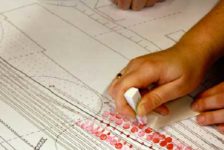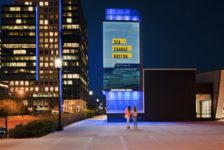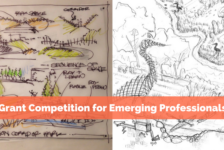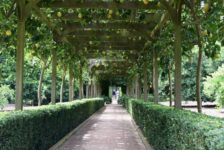Article by Cristina Conciatu – Museum Park Louvre Lens by Mosbach Paysagistes, Lens (Pas-de-Calais), France In the following we explore the Museum Park Louvre Lens, a landscape park which resulted from modern design combined with traces of mining history. An immense work of art of 25 ha surrounds Louvre Lens Museum in Pas-de-Calais, France. A landscaped extension with no walls: a place for culture, animation and popular gathering, which combines modern design with traces of mining history. It is, with no doubt, a poetic destination for those who are passionate about landscape architecture, and we would like to tell you why.
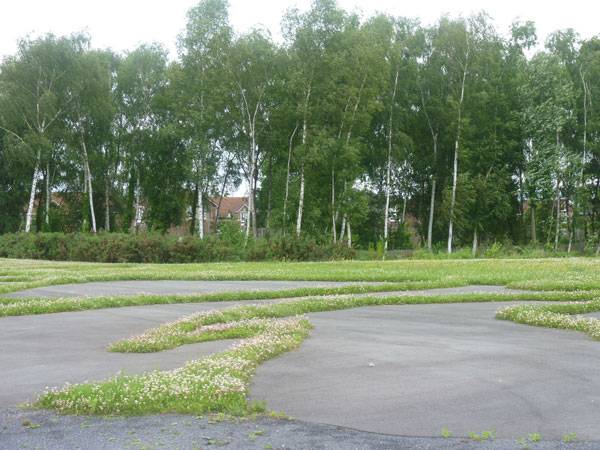
Museum Park Louvre Lens. Photo courtesy of Mosbach Paysagistes
Museum Park Louvre Lens
The museum is an important attraction, as it has many visitors annually. But the Park is also an appealing place, a destination in itself, that complements the Museum’s character and graciousness, by successfully bringing together history, art, architecture and landscape.
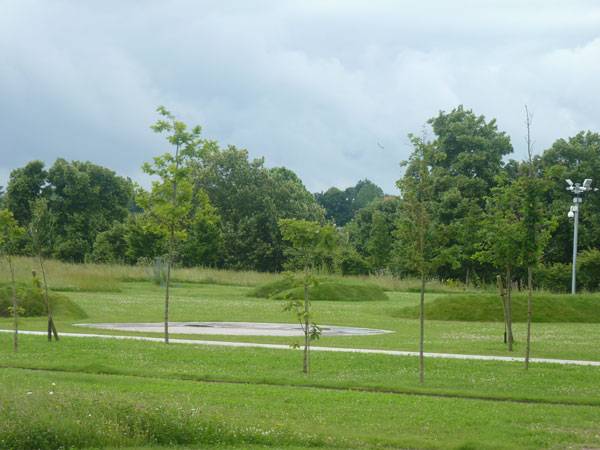
Museum Park Louvre Lens. Photo courtesy of Mosbach Paysagistes
The site on which the Louvre Lens Park is situated nowadays was influenced by the coal industry, which fashioned the land in the 1850’s. The way extracting was done, together with the production and transportation of materials, influenced not only the solid ground on which the park lies today; it also influenced the surrounding living areas and the typology of housing specific to different social categories (families, unmarried people, engineers, workers).
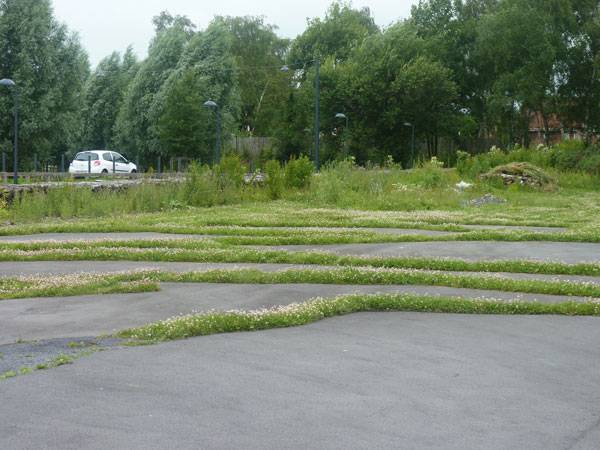
Museum Park Louvre Lens. Photo courtesy of Mosbach Paysagistes
The park is shaped as a long 25 ha stretch (from east to west), situated on a horizontal slag heap – which back in the day, served as storage for exploitation materials; city gardens and housing areas neighbor the site on all of its sides, as a result of people moving here because of their mining jobs.
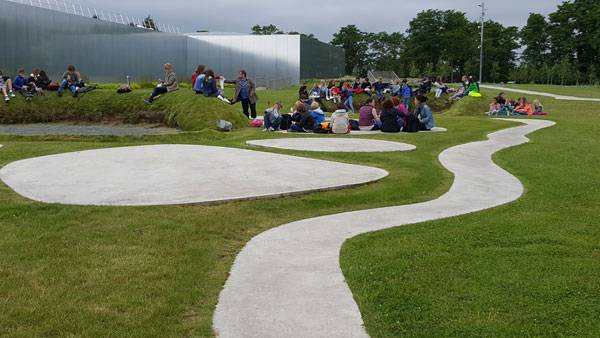
Museum Park Louvre Lens. Photo courtesy of Mosbach Paysagistes
The project makes an important statement: it acknowledges the value and the functions this land once had, and it chooses to commemorate the mining activities that once took place, by simple interventions in the landscape. It is a place of memory, a place of understanding the history of the site and its relationships to the coal dumps.
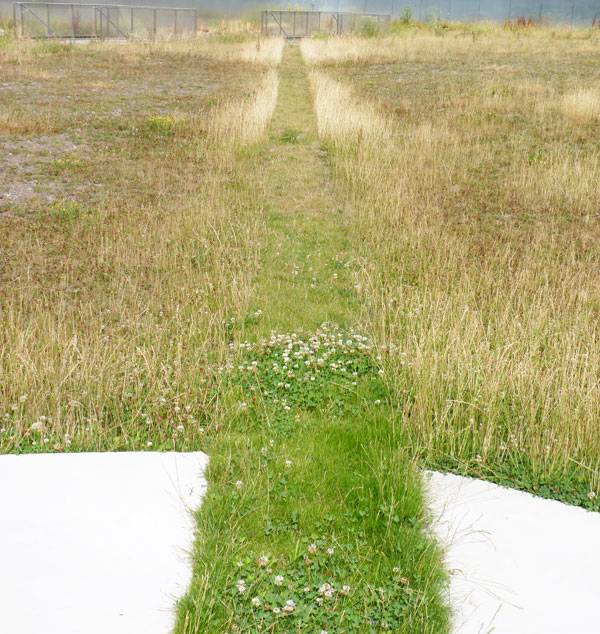
Museum Park Louvre Lens. Photo courtesy of Mosbach Paysagistes
But How, Exactly, Does The Park Summon History?
The surface area of the park is a metaphor shaped by the cartography of hidden underground resources. Some of the rider seams (the tracks used for transporting materials) are now represented as pathways, which take you on a journey throughout the entire site (east to west), that evokes the past in the most subtle manner. The historical entrance and the mine shaft have also been preserved and therefore integrated as key reference elements in the design of the park.
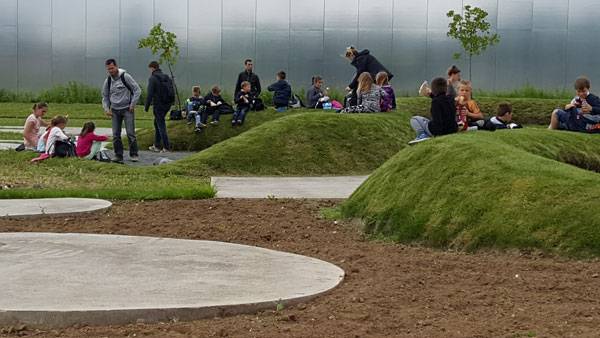
Museum Park Louvre Lens. Photo courtesy of Mosbach Paysagistes
After the mining site was abandoned, the vegetation slowly reclaimed its territory. This determined the development of a pioneer forest to the west, and native corridors along the borders of the rider seams. The site had already gotten its own character and originality from, simply, time.
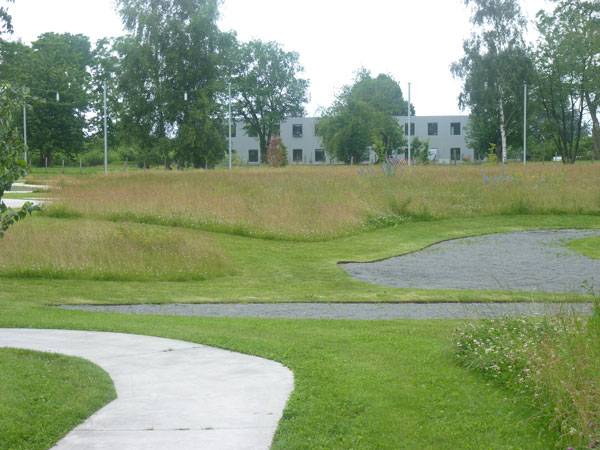
Museum Park Louvre Lens. Photo courtesy of Mosbach Paysagistes
Let’s pretend for a moment that the Louvre Lens Museum is the starting point of our visit. It is a strong landmark and it has big importance in the landscape. Its wall surface, of light grey, reflects the surrounding landscape in a very fine and delicate manner.

Museum Park Louvre Lens. Photo courtesy of Mosbach Paysagistes
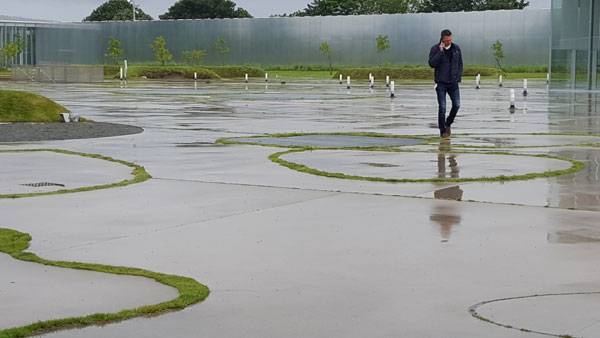
Museum Park Louvre Lens. Photo courtesy of Mosbach Paysagistes
Stepping out from the museum, concrete paving spreads from the building towards the park. Round patches filled with gravel or plants create an interactive environment, and guide you to follow the long, concrete paths that take you throughout the entire site. In some areas, the ground has been opened up, in order to get covered by moss; this eventually will absorb heavy metals and reduce airborne dust.
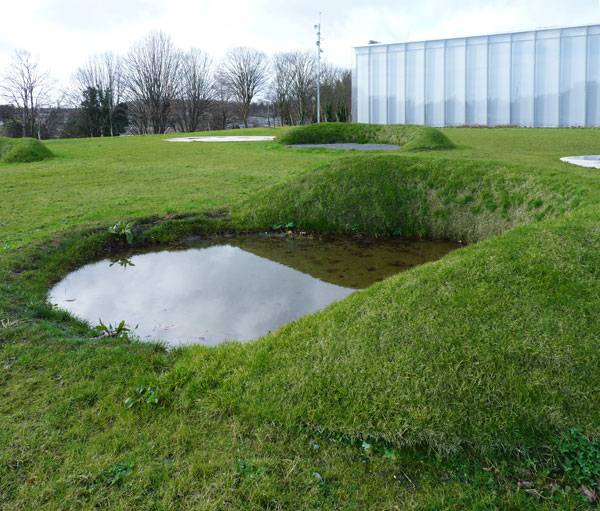
Museum Park Louvre Lens. Photo courtesy of Mosbach Paysagistes
A network of paths spreads out all the way among the pre-existing trees, creating inviting surroundings for people to explore. Along the edges of the wood, the pathways lead the visitors to a wide vast clearing with trees on each side. The location of the site facilitates the connection with the surrounding residential areas and is a meeting place for the citizens. The Museum Park Louvre Lens is not only a recreational and leisure area, but an educational platform related to the area’s industrial past and ecological values.
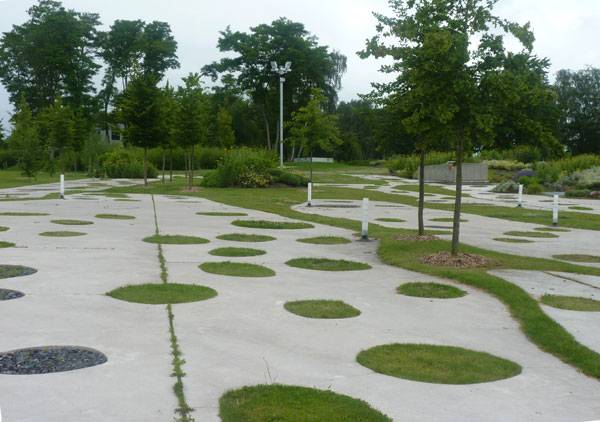
Museum Park Louvre Lens. Photo courtesy of Mosbach Paysagistes
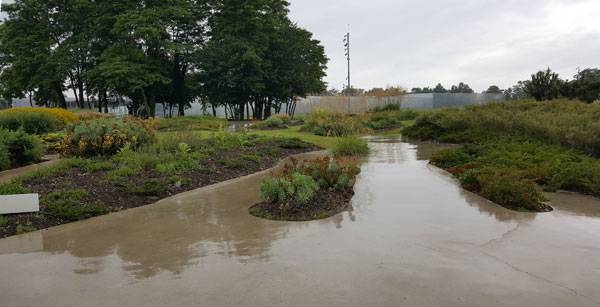
Museum Park Louvre Lens. Photo courtesy of Mosbach Paysagistes
The materials used, consisting of concrete, grass, gravel, trees and shrubs combine harmoniously, and create a natural flow throughout the park, uncovering three different layers for the visitors to probe and explore; the mine layer, the environment layer and the cultural layer. According to the designers, the art is a mediator of all the ages and bridges to new mentalities: the park restores a link inbetween the recording surface and depth – which is the resource of yesterday and tomorrow. The Museum Park Louvre Lens is at the intersection of the three layers mentioned above; mine, environment and culture. A modern interpretation of a coal wasteland that respectfully carries history, transforming it into a poetic piece of art, ready to thrive and be explored.
CLICK TO COMMENT
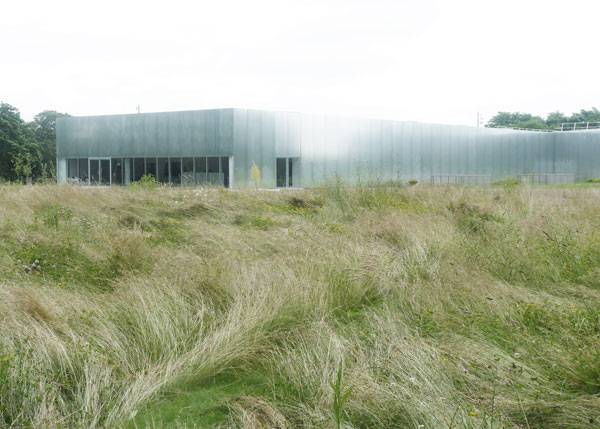
Museum Park Louvre Lens. Photo courtesy of Mosbach Paysagistes
Full Project Credits For Project Name: Museum Park Louvre Lens
Project Name: Museum Park Louvre Lens Location: Lens, Pas-de-Calais, Northern France Budget: 16,500,000 € Date of Construction: 2013 Size: 25 ha Awards: Rosa Barba Finalist 2016 Client: Region North Pas-de-Calais (Pública) Recommended Reading:
Article by Cristina Conciatu
Published in Blog















